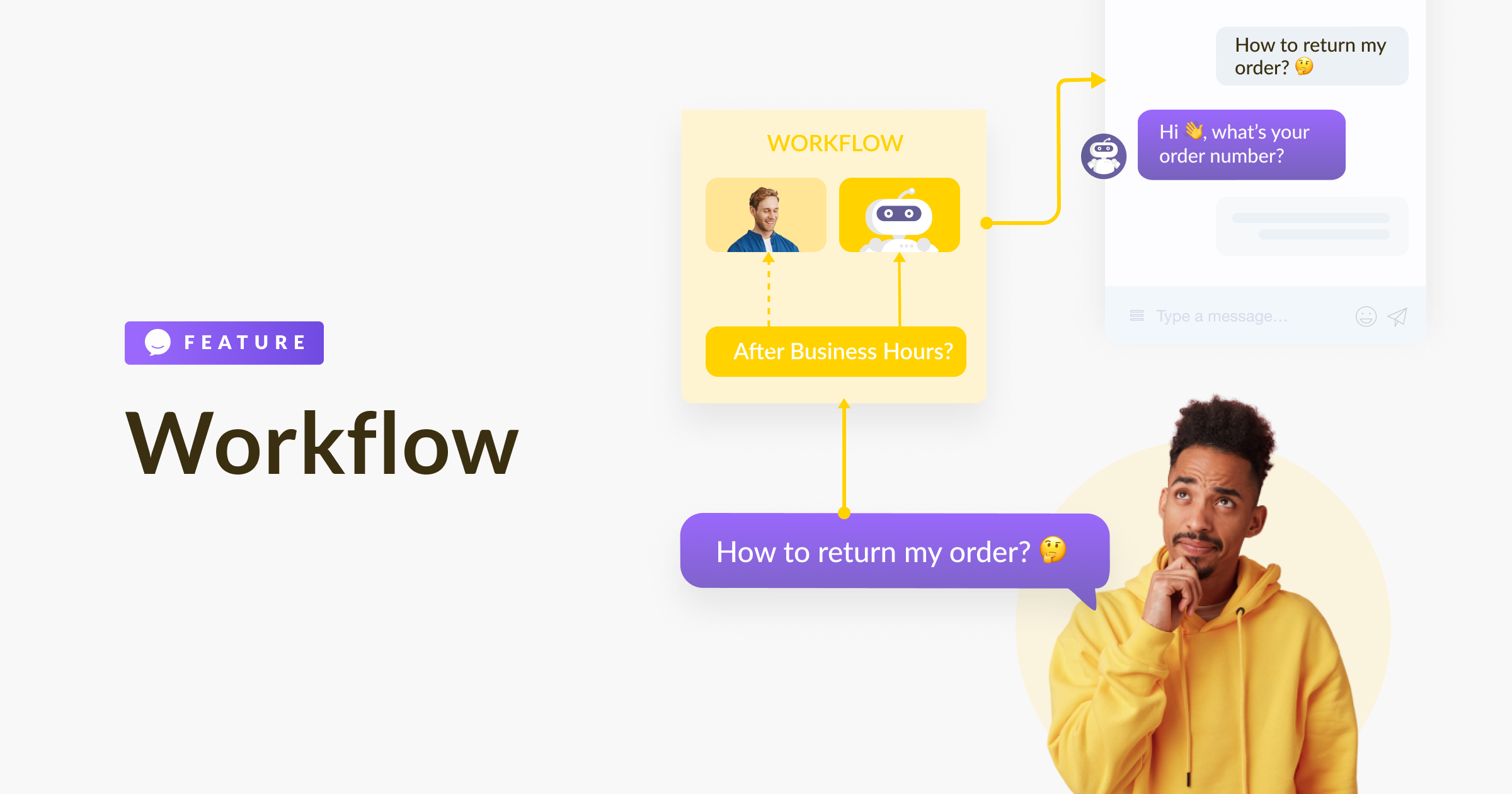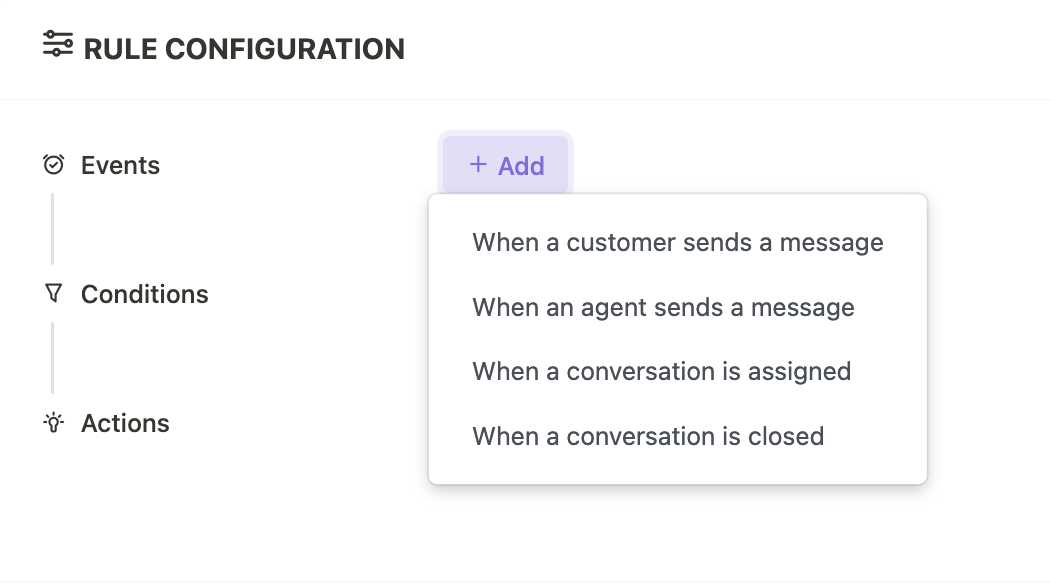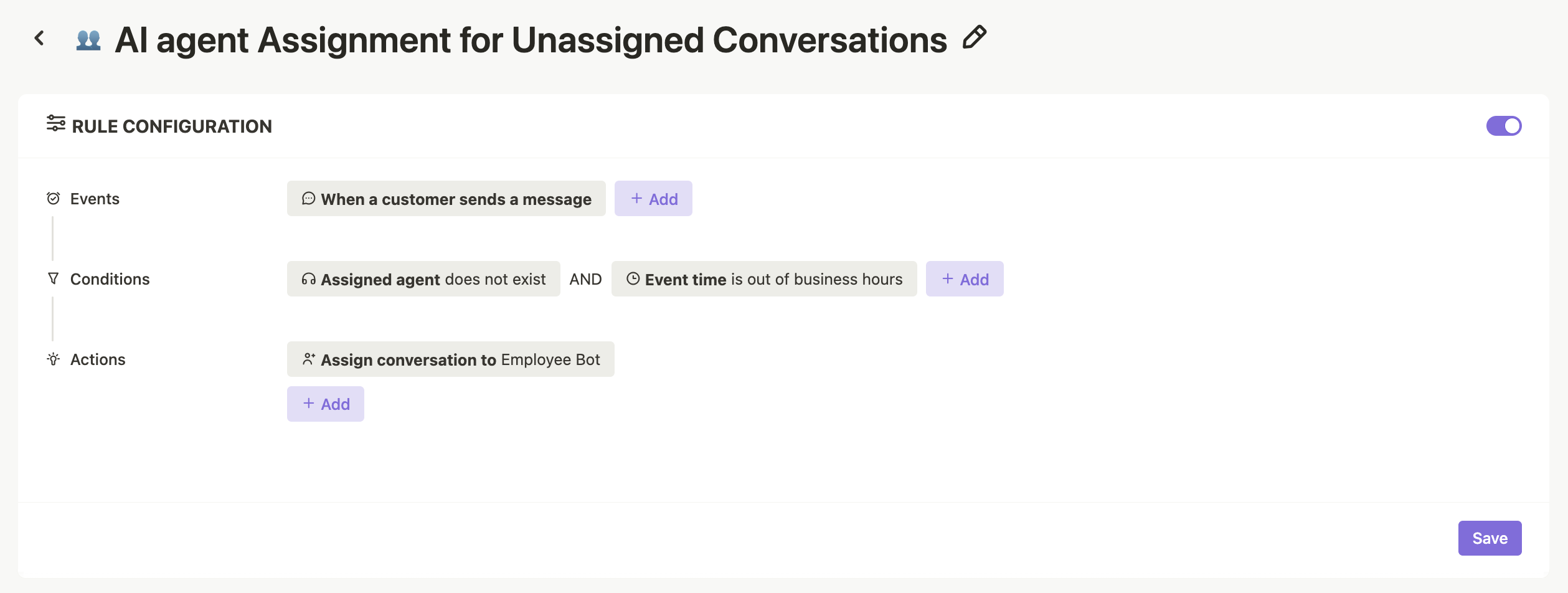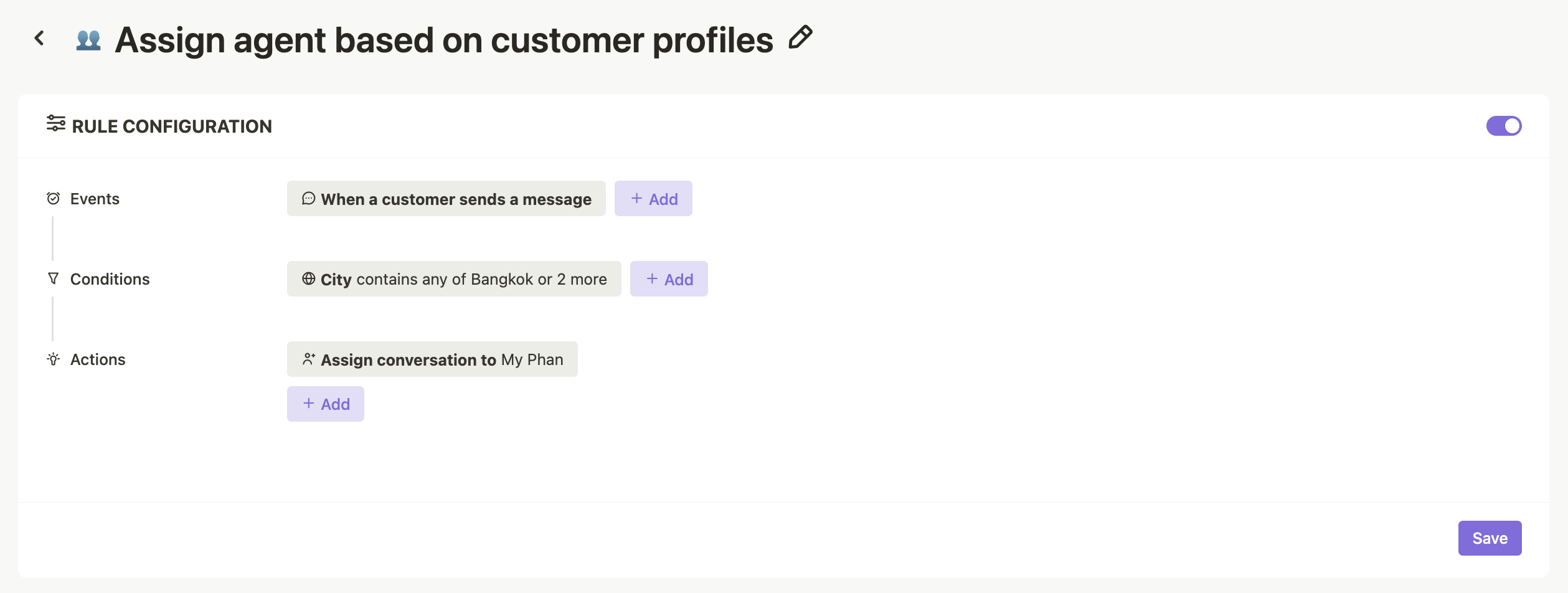How to Streamline Multi-channel Workflow and Enhance Customer Engagement
Welcome to the Workflow Documentation, your go-to resource for simplifying and automating your work processes.
With Workflow, you can create, customize, and automate tasks, eliminating repetitive and manual work. Streamline your processes, improve efficiency, and focus on delivering personalized customer experience with maximized efficiency and minimized cost.

Getting started
In this document, we will provide you with expert tips, best practices, and step-by-step guidance to effectively set up and optimize the power of Workflow. Get ready to explore the three essential components that drive this innovative feature:
- Events: Trigger the workflow at its starting point.
- Conditions: Determine when the workflow should be activated.
- Actions: Execute automated tasks in response to the condition.
By understanding these components, you can streamline your operations and achieve better results. Let's dive in and unlock the full potential of Workflow.
Set up Workflow rule
Events
Events serve as triggers to start automation rules. You can set the conditions that must be met for the rule to be triggered and executed. You have the flexibility to choose from a variety of event options, including:
- When a customer sends a message
- When an agent sends a message
- When a conversation is assigned
- When a conversation is closed

Conditions
Workflow allows you to set specific criteria to trigger automation rules. These conditions are based on conversation information, messages, operations, channels, and contact information. Here are the simplified conditions you can define:
- Conversations: Set conditions based on conversation attributes, such as conversation status, assigned agent, topic, or messages within the conversation
- Messages: Define conditions based on message content, including specific keywords or message types
- Operations: Apply conditions based on certain operations within the conversation, such as during business hours or out of business hours.
- Channels: Set conditions specific to the channel through which the conversation is taking place, such as live chat, or social messaging platforms.
- Customers: Define conditions based on customer information, such a name, email, phone number, locale, or timezone, etc.
Actions
Workflow provides various actions that can be applied to both conversations and contacts, allowing for streamlined and automated processes.
Conversation
- Send a Message: Automatically send a predefined message to the customer within the conversation.
- Assign Conversation to: Automatically assign the conversation to a specific agent.
- Unassign Conversation: Remove the assignment of the conversation from a specific agent.
- Close Conversation: Mark the conversation as "Closed"
- Open Conversation: Reopen a previously closed conversation.
- Note Conversation: Add notes to the conversation.
- Update Conversation Topic: Automatically update the topic of the conversation.
Contact
- Add Tag to Contact: Attach a specific tag to the contact's profile for easy categorization.
- Remove Tag from Contact: Remove a specific tag from the contact's profile.
- Note Contact: Add notes to the contact's profile.
- Update Contact Information: Automatically update contact information, such as email or phone number.
These actions provide flexibility and automation within Smart Workflow, enabling efficient handling of conversations and management of contact details.
Common Workflow rule examples
Now that you understand the concept of automated workflow, let's explore some practical examples.
Workflow can be applied to a variety of tasks and activities, reducing manual effort and increasing productivity. Here are some examples of common tasks that can be managed and automated by Workflow in Chative.IO.
AI Assistant assignment for unassigned conversations
Automatically assign an AI Agent to handle new conversations that do not have an assigned agent. Explore how to make your AI Assistant go live automatically here.

Retain customers when no staff is available
Automatically send a message to inform your customers that your team is unavailable to respond immediately during non-business hours. This reassures customers that their inquiries are valued and will be addressed promptly.

Add contact labels
Tag automatically to the contact when a message containing a specific keyword is sent by either an agent or a contact.

Automatically reassign online agent
Automatically assign another agent to handle the conversation and respond to customer messages when the originally assigned agent is unavailable.

Assign Agent based on customer profiles
Automatically assign an agent to a customer based on their profile information, such as city and country, to ensure they are served by the appropriate agent for their location.
